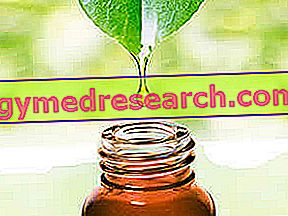What is that
Pantothenic acid, commonly identified by the abbreviation B5, is a water-soluble vitamin of group B, with characteristics of thermolability (therefore susceptible to temperature rise) and instability to acid-base variations in pH.

In food
Pantothenic acid is an almost ubiquitous molecule, therefore, it is found to a greater or lesser extent (directly or in the form of provitamin, panthenol) in most food products; the richest organic sources of pantothenic acid are legumes and offal, but in all probability, the probiotic action of the intestinal bacterial flora favors the achievement of the recommended ration, directly increasing (see functions of intestinal bacterial flora ) the intake of vitamin B5.
NB. 85% of the food pantothenic acid is found in the form of Coenzyme A and Phosphopanthenine.
shortage
The essential deficiency of pantothenic acid is very rare and NEVER PURE, as it manifests itself only with GREAT states of GENERAL malnutrition; on the other hand, in the literature there are no documented clinical pictures attributable to the toxic potential of this molecule.
Functions
Pantothenic acid is the precursor of Coenzyme A, a fundamental molecule for the metabolism of all three macronutrients and steroid hormones, as it acts as a universal transporter of acyl groups. Furthermore, vitamin B5 is the main constituent of Acyl-Carrier-Protein (ACP), a carrier, or transport protein, implicated in the complex synthesis of fatty acids.
In the body, free pantothenic acid is a very scarce portion, while most are found in tissues in the form of coenzyme A and ACP.
The metabolism / catabolism of pantothenic acid is not entirely clear, but an increase in urinary excretion was observed following supplementary administrations; on the other hand, there is an increase in serum vitamin B5 levels during fasting and in insulin-free diabetes. In this regard, it is conceivable that the decrease in urinary excretion of pantothenic acid is sensitive to concentrations of circulating insulin (tubular reabsorption and vice versa)
Requirement and Recruitment
To date, no scientific studies are available on the estimate of the recommended ration of pantothenic acid, but according to the "Commission of the European Community", 4-7mg / day of vitamin B5 or panthenol (precursor) should be sufficient to maintain the state of health; the safe interval to the prevention of deficiency and toxicity for the general population is between 3-12mg / day.
Bibliography:
- Recommended intake levels of Nutrients for the Italian population (LARN) - Italian Society of Human Nutrition (SINU)



